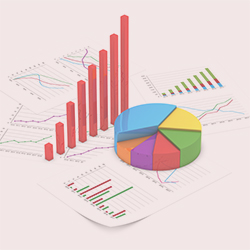 Understanding procurement spend is key to performance managing your procurement. However, it’s also the foundation for continuous improvement. But do you have the right data for effective procurement spend analysis?
Understanding procurement spend is key to performance managing your procurement. However, it’s also the foundation for continuous improvement. But do you have the right data for effective procurement spend analysis?
It’s likely that you have some kind of understanding of the cost of what your organisation buys. To achieve effective procurement spend analysis, you’re going to need to collect data about your procurement. Collecting data on an ongoing basis will enable your team to monitor spend and benchmark savings. But what data do you need to collect?
What data do you need to collect?
Systematically capturing the following data and having it readily available for analysis will form the bedrock of procurement performance management. We think there are ten core questions that you need to answer about procurement activity.
- What was purchased?
- When was it purchased?
- Who was it purchased from?
- How many potential suppliers provided proposals?
- Was an auction process used?
- Have we purchased this before?
- Who purchased it?
- Why was it purchased?
- How long did the purchase cycle take?
- Did procurement have visibility of the purchase?
You may need to interrogate other systems – especially in the case of purchases not visible to procurement. However, your eProcurement system should be capable of capturing and providing the majority of the data you will need. A data-centric system will capture the procurement activity and store the timing, content and actions of the process as data.
What should you be looking for?
Once you have accessible data, effective procurement spend analysis will likely depend upon having a clear idea what you’re looking for. Your organisation will benefit from looking at spend in the following categories:
- By supplier
- By product type
- By size of purchase
- By department
- By direct/indirect purchase
- By month
You should also be able to make comparisons with previous purchasing activity or industry benchmarks. Monitoring maverick spending and procurement cycle times will also deliver benefit.
Key actions to take
Making use of the data and analysis is, obviously, the most important step. There’s an opportunity to use the data to create messages for the rest of the business and to make clear the value that the procurement function brings.
Actions as a result of the spend analysis might include rationalising the supplier base in order to improve negotiating leverage with fewer suppliers. Where similar items are being ordered from multiple suppliers, some procurement governance will result in the offer of higher volume with suppliers and, consequently, lower unit costs.
The review should also look at the cycle times for procurement. This will give you a measure of how effectively requirements are being captured and suppliers are being engaged. There may be opportunities to improve practices or streamline processes.
Compliance and procurement governance should also be something that is constantly monitored. Taking a sound, data-led approach to reducing maverick spend will deliver savings to the bottom line and should get the attention of senior management.

